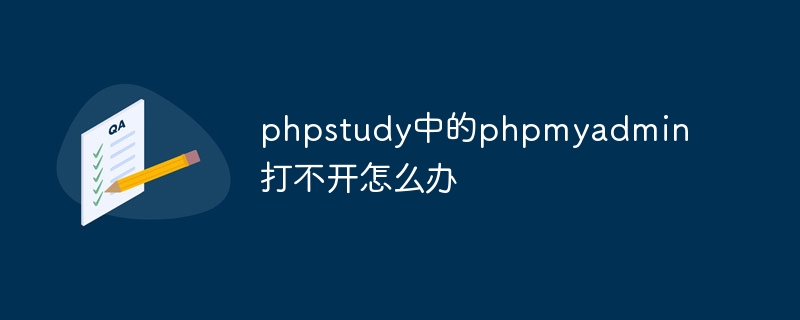Home >Operation and Maintenance >phpstudy >What should I do if phpmyadmin in phpstudy cannot be opened?
What should I do if phpmyadmin in phpstudy cannot be opened?
- 下次还敢Original
- 2024-04-02 13:51:211367browse
Solution to phpMyAdmin not opening: Start MySQL service, check port usage and modify phpMyAdmin port, clear browser cache, close firewall restrictions, check configuration, database connection and server load, reset phpMyAdmin

Solution to the problem that phpMyAdmin in phpStudy cannot be opened
phpMyAdmin is a database management tool integrated with phpStudy. When it cannot be opened, it may It is caused by the following reasons:
1. The MySQL service has not been started
- Open the phpStudy control panel and check whether the MySQL service has been started.
- If it is not started, click the "Start" button to start the MySQL service.
2. The phpMyAdmin port is occupied
- By default, phpMyAdmin uses port 80, and some applications may also use port 80.
- Check if any other application is using port 80 and close it or change its port.
- To change the phpMyAdmin port, please edit the "phpMyAdmin\config.inc.php" file in the phpStudy installation directory and find "$cfg['Servers'][$i]['port'] = ' 80';" line and change the "80" there to another unoccupied port.
3. Browser cache problem
- Clear browser cache and cookies.
- Try using another browser or opening phpMyAdmin in incognito mode.
4. Firewall Restrictions
- Check whether the firewall blocks access to port 80 (or the port used by phpMyAdmin).
- Allow access to this port in the firewall settings.
5. Other issues
- phpMyAdmin configuration error: Check the "phpMyAdmin\config.inc.php" file are the settings correct.
- Database connection error: Make sure the MySQL database is running and phpMyAdmin is able to connect to the database.
- Server Busy: If the server load is too high, phpMyAdmin may not be able to connect. Try again later.
6. Reset phpMyAdmin
- If none of the above methods can solve the problem, you can try resetting phpMyAdmin.
- In the phpStudy control panel, find phpMyAdmin, right-click and select "Reset".
The above is the detailed content of What should I do if phpmyadmin in phpstudy cannot be opened?. For more information, please follow other related articles on the PHP Chinese website!

